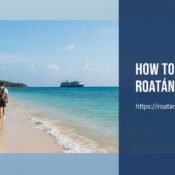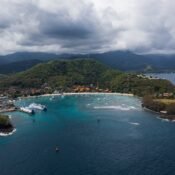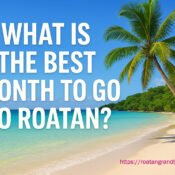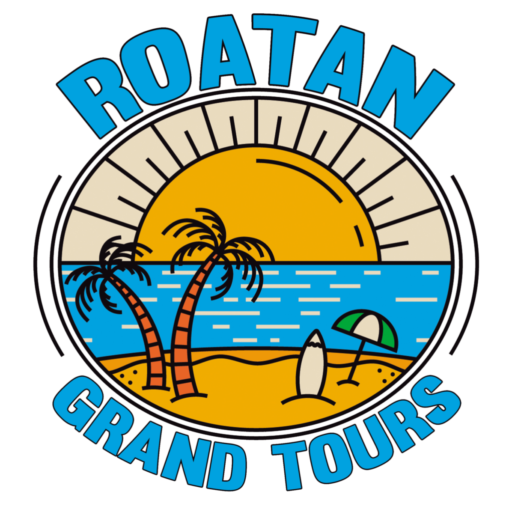Discover Roatán: Meet Monkeys, Sloths, and Macaws in a Tropical Paradise

Discover Roatán: Meet Monkeys, Sloths, and Macaws in a Tropical Paradise
Are you dreaming of a tropical getaway that offers more than just pristine beaches? Look no further than Roatán, Honduras – a Caribbean jewel where wildlife adventures await around every corner. When you discover Roatán, monkeys, sloths, and macaws become your welcoming committee to this enchanting island paradise. Nestled in the Caribbean Sea as part of the Bay Islands, Roatán combines breathtaking natural beauty with unique opportunities to connect with exotic wildlife in their natural habitat.
Why Roatán is a Wildlife Lover’s Dream

Roatán’s extraordinary biodiversity makes it a standout destination for nature enthusiasts. The island’s lush tropical climate creates the perfect environment for diverse ecosystems to thrive both on land and in the surrounding coral reefs. Unlike many tourist destinations where wildlife viewing feels staged, Roatán offers authentic encounters with animals in environments designed to prioritize their welfare.
What makes this island truly special is its commitment to wildlife conservation. Over the years, Roatán has developed numerous animal sanctuaries and rescue centers dedicated to protecting native and endangered species. These facilities not only provide safe havens for animals that can’t survive in the wild but also educate visitors about conservation efforts and the importance of preserving these magnificent creatures for future generations.
The island’s unique geography – a mountainous spine covered in tropical forest surrounded by crystal-clear waters – creates diverse habitats that support an impressive range of species. When you discover Roatán, monkeys, sloths, and macaws are just the beginning of the wildlife wonders you’ll encounter. From colorful reef fish to rare island birds, the biodiversity here offers endless opportunities for nature photography and unforgettable experiences.
Monkey Encounters: Playful and Curious Creatures

One of the most delightful experiences Roatán offers is the chance to interact with its resident monkey populations. Gumbalimba Park, located near West Bay, stands as the premier destination for these encounters. Home to white-faced capuchin monkeys, this sanctuary allows visitors to experience these intelligent primates up close in a controlled yet natural environment.
During guided tours through Gumbalimba Park, knowledgeable guides share fascinating insights about capuchin behavior, diet, and social structures. The highlight for many visitors comes when the monkeys, curious and playful by nature, often jump onto visitors’ shoulders for a closer look – creating perfect photo opportunities and memories that last a lifetime.
For those seeking monkey encounters, here’s what to expect:
- Guided tours: Professional naturalists lead small groups through the sanctuary, ensuring both visitor safety and animal welfare.
- Interactive feeding sessions: Under staff supervision, visitors may have opportunities to offer approved foods to the monkeys.
- Photography opportunities: The monkeys are accustomed to humans and often pose perfectly for memorable vacation photos.
- Educational presentations: Learn about conservation efforts and the challenges these species face in the wild.
To ensure both your enjoyment and the monkeys’ wellbeing, remember these important tips:
- Follow all guide instructions: The rules exist to protect both you and the animals.
- Don’t bring food not provided by the sanctuary: Human food can be harmful to monkeys.
- Secure loose items: Monkeys are naturally curious and may grab hats, glasses, or jewelry.
- Stay calm: Sudden movements might startle the monkeys. Enjoy their company quietly.
- Ask before touching: Always defer to your guide about appropriate interaction.
By visiting responsibly, you help ensure these remarkable creatures continue to thrive in their island home, allowing future travelers to also discover Roatán’s monkeys, sloths, and macaws in their natural habitat.
Sloth Sanctuaries: Meeting the Laid-Back Locals

No wildlife tour of Roatán would be complete without encountering the island’s beloved sloths. These gentle, slow-moving mammals have captured the hearts of visitors worldwide with their perpetual smiles and unhurried approach to life. Daniel Johnson’s Monkey and Sloth Hangout, located in French Harbour, offers one of the best opportunities to observe these fascinating creatures up close.
What makes sloth encounters in Roatán special is the opportunity to see these animals in environments that mimic their natural habitat while providing educational insights into their behavior and conservation. During your visit, you’ll learn fascinating facts about sloths:
- They move so slowly that algae sometimes grows on their fur, creating natural camouflage
- Sloths sleep between 15-20 hours daily
- They descend from their trees only once weekly for bathroom breaks
- Two-toed and three-toed sloths have distinct behaviors and appearances
Most sanctuaries offer guided sloth encounters where you can:
- Observe sloths in their preferred treetop homes
- Learn about their unique adaptations and lifestyle
- Participate in carefully supervised holding sessions (at select locations)
- Support conservation efforts through your visit
When visiting sloth sanctuaries, remember these are naturally shy animals that thrive on routine and calm environments. Keep voices low, follow all handling guidelines, and remember that the welfare of these gentle creatures always comes first.
Magnificent Macaws: Roatán’s Colorful Residents

The vibrant plumage of macaws adds spectacular flashes of color to Roatán’s green landscape. These intelligent birds, among the largest in the parrot family, are not only visually stunning but also incredibly vocal and sociable. The Macaw Mountain Bird Park and Nature Reserve provides an outstanding opportunity to appreciate these magnificent creatures in a facility dedicated to conservation and education.
At Macaw Mountain, visitors can:
- Walk through large aviaries housing numerous macaw species
- Learn about ongoing conservation and breeding programs
- Participate in interactive presentations and feeding sessions
- Hold a macaw for an unforgettable photo opportunity
- Witness free-flying macaws that have been successfully rehabilitated
The scarlet macaw, Honduras’ national bird, takes center stage in many of these conservation efforts. Once threatened by habitat loss and the illegal pet trade, these birds are making a comeback thanks to the dedicated work of Roatán’s wildlife advocates.
Planning Your Wildlife Adventure in Roatán
To make the most of your wildlife encounters in Roatán, consider these practical tips:
Best Time to Visit: While Roatán welcomes visitors year-round, the dry season (February to June) often provides the most comfortable weather for wildlife viewing.
Where to Stay: Properties near West Bay and West End offer convenient access to many wildlife sanctuaries while providing beautiful beach accommodations.
Guided Tours: Consider booking a comprehensive island tour that includes multiple wildlife stops. Many resorts partner with reputable tour operators specializing in wildlife experiences.
Photography Tips: Bring a camera with zoom capabilities for wildlife photos, and consider waterproof options if you’ll be combining wildlife viewing with snorkeling adventures.
Responsible Tourism: Choose facilities that prioritize animal welfare and conservation. The best sanctuaries prioritize education and rehabilitation over entertainment.
Beyond the Wildlife: Complete Your Roatán Experience
While the animal encounters may draw you to Roatán initially, the island offers numerous complementary activities to round out your vacation:
- World-class snorkeling and diving along the Mesoamerican Reef
- Zipline adventures through the jungle canopy
- Cultural experiences in local Garifuna villages
- Beach relaxation on white sand shores
- Water sports including paddleboarding and kayaking
- Fresh seafood dining at waterfront restaurants
Conservation Efforts: Protecting Roatán’s Natural Treasures
Your visit to Roatán’s wildlife sanctuaries directly supports crucial conservation work. Many facilities operate as non-profits, using tourism revenue to fund animal care, habitat preservation, and community education programs.
The island faces ongoing conservation challenges, including:
- Habitat preservation in the face of tourism development
- Protection of endangered species from illegal trafficking
- Marine conservation to protect the surrounding coral reef
- Education initiatives to promote sustainable practices
By choosing ethical wildlife experiences during your visit, you become part of the solution, helping ensure these precious creatures thrive for generations to come.
Sloths: The Slow-Moving Stars of Roatán
No wildlife tour of Roatán would be complete without encountering the island’s beloved sloths. These gentle, slow-moving mammals have captured the hearts of visitors worldwide with their perpetual smiles and unhurried approach to life. Their popularity has soared in recent years, making them one of the most sought-after animal encounters on the island.
Where to Find Sloths in Roatán
Several sanctuaries around the island offer opportunities to meet these remarkable creatures:
Daniel Johnson’s Monkey and Sloth Hangout: Located in French Harbour, this family-run sanctuary is perhaps the most renowned location for sloth encounters. The facility houses both Hoffman’s two-toed sloths and brown-throated three-toed sloths in spacious, naturalistic environments.
Mayan Eden Nature Park: This expansive ecological reserve in Coxen Hole features various wildlife exhibits, including a dedicated sloth sanctuary where visitors can observe and sometimes interact with these gentle creatures.
Little French Key: This small private island offers a comprehensive wildlife experience that includes a rescue center with resident sloths, providing another excellent option for wildlife enthusiasts.
Gumbalimba Park: While better known for its monkey encounters, this park also houses several rescued sloths that visitors can observe during guided tours.
Why Sloths Fascinate Travelers
Sloths possess a unique combination of characteristics that make them irresistible to wildlife lovers:
Fascinating Biology: Sloths are evolutionary marvels with numerous adaptations perfectly suited to their arboreal lifestyle:
- Their metabolism is remarkably slow, allowing them to survive on minimal food intake (primarily leaves)
- They move so slowly that algae often grows on their fur, creating natural camouflage
- Their fur grows in the opposite direction from most mammals (from belly to back) to allow rainwater to run off while hanging upside down
- They can rotate their heads nearly 180 degrees thanks to extra vertebrae in their necks
- Sloths sleep between 15-20 hours daily, conserving energy
- They descend from their trees only once weekly for bathroom breaks, making themselves vulnerable to predators
Expressive Faces: Their perpetual “smile” and large, soulful eyes create an immediate emotional connection with humans. This facial structure is actually an evolutionary adaptation rather than an emotional expression, but it endears them to visitors nonetheless.
Calm Demeanor: In our fast-paced world, sloths represent the ultimate embodiment of slow living. Their unhurried movements and seemingly contented approach to life resonate with travelers seeking to escape the hectic pace of modern existence.
Unique Behavior: From their upside-down lifestyle to their peculiar swimming abilities (they’re actually quite good swimmers), sloths behave unlike any other mammal, making them endlessly fascinating to observe.
Guidelines for Responsible Sloth Encounters
While holding a sloth is often the highlight of a Roatán wildlife experience, it’s important to approach these encounters with respect for the animals’ welfare:
Choose Ethical Facilities: Select sanctuaries that prioritize animal welfare over profit. Reputable facilities limit handling time, provide appropriate diets and housing, and participate in conservation efforts.
Proper Handling Technique: If permitted to hold a sloth:
- Support their full body weight, especially their hindquarters
- Avoid sudden movements or loud noises
- Never grab their limbs or force positions
- Keep interactions brief (under 5 minutes)
- Don’t attempt to wake a sleeping sloth
Photography Tips:
- Turn off your flash, as sloths have sensitive eyes adapted to forest shade
- Have someone else take photos while you hold the sloth so you can focus on proper support
- Consider using your phone’s portrait mode for better focus in variable lighting
- Respect facilities that limit photo time to prioritize animal welfare
Health Considerations:
- Always wash hands before and after interactions
- Avoid contact if you’re ill, as sloths can contract human respiratory infections
- Don’t apply insect repellent or sunscreen immediately before handling sloths, as chemicals can transfer to their fur
Remember that the best sloth facilities in Roatán work with wildlife authorities and participate in conservation programs. Many of their resident animals are rescues that cannot be returned to the wild due to injury or habituation, and your visit helps fund their care and protection.
Macaws and Other Exotic Birds: Roatán’s Living Rainbows
The vibrant plumage of macaws adds spectacular flashes of color to Roatán’s green landscape. These intelligent birds, among the largest in the parrot family, create a stunning visual display that captivates visitors and photographers alike. Their presence represents both the island’s rich biodiversity and the importance of ongoing conservation efforts.
Discover the Vibrant World of Macaws and Parrots in Roatán
Roatán’s unique position as a Caribbean island with Central American biogeography makes it home to an impressive variety of exotic birds. Among these, the macaws stand out as the most brilliant and charismatic:
Scarlet Macaws: As Honduras’ national bird, these magnificent creatures display brilliant red plumage with blue and yellow wing accents. With a wingspan reaching over three feet, they create an unforgettable sight when in flight.
Great Green Macaws: Slightly larger than their scarlet cousins, these predominantly green birds feature blue and red markings and are among the more endangered macaw species.
Blue and Gold Macaws: Instantly recognizable by their striking blue tops and golden underparts, these social birds are known for their intelligence and vocal abilities.
Military Macaws: These medium-sized macaws feature olive-green bodies with bright red shoulder patches and blue wing tips, creating a distinctive appearance.
Beyond macaws, Roatán hosts numerous other parrot species, including Amazon parrots, conures, and parakeets, each contributing to the island’s vibrant avian tapestry.
Where to Experience Macaws in Roatán
Several locations around the island offer exceptional opportunities to observe and interact with these magnificent birds:
Macaw Mountain Bird Park and Nature Reserve: Originally established in mainland Honduras and now with a satellite facility in Roatán, this conservation center offers the most comprehensive bird experience. Visitors can walk through large naturalistic aviaries housing numerous macaw species while learning about their ecology and conservation.
Arch’s Iguana and Marine Park: This dual-purpose sanctuary features both marine life and a collection of rescued birds, including several macaw species that visitors can observe up close.
Gumbalimba Park: In addition to its famous monkeys, this park houses several macaw species that participate in educational presentations and photo opportunities.
Carambola Botanical Gardens: For those interested in spotting wild birds, the gardens’ network of trails offers opportunities to glimpse native and migratory species in their natural habitat.
Conservation Efforts: Protecting Roatán’s Feathered Gems
Macaws face significant challenges in the wild, with most species classified as endangered or vulnerable due to:
Habitat Loss: Deforestation in Central America has severely reduced the natural range of many macaw species.
Illegal Wildlife Trade: Their striking appearance and intelligence make macaws prime targets for poaching and the illegal pet trade.
Slow Reproduction: Macaws typically mate for life and produce only a few offspring annually, making population recovery slow.
Roatán’s bird sanctuaries play a crucial role in conservation through several key initiatives:
Breeding Programs: Facilities like Macaw Mountain participate in carefully managed breeding programs to increase populations of endangered species, particularly the scarlet macaw.
Rehabilitation and Release: Many of Roatán’s macaws are former pets or rescued birds that undergo rehabilitation before potential release. The “Freedom Flight” program at Macaw Mountain has successfully reintroduced numerous scarlet macaws into protected areas.
Education and Awareness: By introducing visitors to these magnificent birds, sanctuaries foster appreciation and support for conservation efforts both locally and internationally.
Research Partnerships: Several facilities collaborate with universities and conservation organizations to study macaw behavior, health, and habitat requirements.
Best Times for Birdwatching and Macaw Interactions
For the most rewarding bird experiences in Roatán, consider these timing tips:
Daily Timing: Most macaws are most active in the early morning (6-9 AM) and late afternoon (3-6 PM), making these ideal times for photography and observation.
Feeding Demonstrations: Most sanctuaries schedule regular feeding presentations that offer excellent opportunities to see macaws in action. These typically occur mid-morning and mid-afternoon.
Seasonal Considerations: While resident birds remain year-round, the December to April dry season offers more predictable weather for birdwatching excursions.
Migration Periods: For enthusiasts interested in spotting migratory species in addition to resident macaws, April-May and September-October represent peak migration periods.
Interactive Experiences with Macaws
Beyond observation, many facilities offer unique interactive experiences with macaws:
Handling Opportunities: Under staff supervision, visitors can often hold trained macaws, feeling their surprising lightness and observing their intelligent eyes up close.
Photography Sessions: Professional photographers can arrange special access for portrait sessions with these photogenic birds.
Feeding Experiences: Some sanctuaries offer opportunities to hand-feed macaws under strict supervision.
Behavioral Demonstrations: Educational presentations showcase macaws’ problem-solving abilities, natural behaviors, and surprising vocal talents.
When interacting with macaws, remember these essential guidelines:
- Follow all staff instructions precisely
- Move slowly and speak quietly
- Avoid wearing dangling jewelry that could tempt curious beaks
- Never attempt to touch a macaw’s head or beak without permission
- Support the bird properly if allowed to hold one
- Don’t feed macaws anything not approved by sanctuary staff
Through these carefully managed interactions, visitors gain a deeper appreciation for these magnificent birds while supporting the conservation efforts that ensure their survival for future generations.
Planning Your Wildlife Adventure in Roatán
To make the most of your wildlife encounters in Roatán, consider these practical tips:
Best Time to Visit: While Roatán welcomes visitors year-round, the dry season (February to June) often provides the most comfortable weather for wildlife viewing.
Where to Stay: Properties near West Bay and West End offer convenient access to many wildlife sanctuaries while providing beautiful beach accommodations.
Guided Tours: Consider booking a comprehensive island tour that includes multiple wildlife stops. Many resorts partner with reputable tour operators specializing in wildlife experiences.
Photography Tips: Bring a camera with zoom capabilities for wildlife photos, and consider waterproof options if you’ll be combining wildlife viewing with snorkeling adventures.
Responsible Tourism: Choose facilities that prioritize animal welfare and conservation. The best sanctuaries prioritize education and rehabilitation over entertainment.
Beyond the Wildlife: Complete Your Roatán Experience
While the animal encounters may draw you to Roatán initially, the island offers numerous complementary activities to round out your vacation:
- World-class snorkeling and diving along the Mesoamerican Reef
- Zipline adventures through the jungle canopy
- Cultural experiences in local Garifuna villages
- Beach relaxation on white sand shores
- Water sports including paddleboarding and kayaking
- Fresh seafood dining at waterfront restaurants
Conservation Efforts: Protecting Roatán’s Natural Treasures
Your visit to Roatán’s wildlife sanctuaries directly supports crucial conservation work. Many facilities operate as non-profits, using tourism revenue to fund animal care, habitat preservation, and community education programs.
The island faces ongoing conservation challenges, including:
- Habitat preservation in the face of tourism development
- Protection of endangered species from illegal trafficking
- Marine conservation to protect the surrounding coral reef
- Education initiatives to promote sustainable practices
By choosing ethical wildlife experiences during your visit, you become part of the solution, helping ensure these precious creatures thrive for generations to come.
5. Family-Friendly Wildlife Tours in Roatán
Roatán, the jewel of the Bay Islands, is not just a paradise for beach lovers and scuba divers—it’s also a haven for families seeking enriching and exciting wildlife experiences. The island offers a wide array of family-friendly wildlife tours that are designed to delight all ages while ensuring safety and education go hand-in-hand with adventure.
Top Recommended Family Wildlife Tours and Packages
- Gumbalimba Park: A favorite among families, this lush park combines nature and history. Children can interact with capuchin monkeys and colorful macaws in a safe, guided environment. The park also features a pirate cave, suspension bridges, and nature trails, offering fun learning experiences for curious minds.
- Daniel Johnson’s Monkey and Sloth Hangout: Perfect for animal-loving kids, this sanctuary allows close but respectful interaction with sloths, monkeys, parrots, and more. It’s an educational visit that teaches children about the native and rescued wildlife of Roatán.
- Roatán Butterfly Garden and Iguana Farm: These quieter, more contemplative venues allow families to observe local flora and fauna up close. At the iguana farm, children can feed and walk among hundreds of iguanas, while the butterfly garden showcases native species in a tranquil setting.
Safety, Education, and Fun — A Perfect Combination
Tour operators in Roatán understand the unique needs of families traveling with children. Licensed guides prioritize safety, provide engaging commentary tailored to younger audiences, and ensure that all encounters are conducted ethically and under supervision. These wildlife tours are more than just sightseeing trips—they are immersive learning opportunities that foster respect for animals and the environment.
Whether it’s holding a sloth, feeding a toucan, or learning about marine ecosystems, family-friendly tours in Roatán offer unforgettable moments that will become treasured memories for years to come.
6. Responsible Tourism and Animal Welfare in Roatán
While wildlife tourism is a major draw in Roatán, the island places a strong emphasis on responsible tourism—ensuring that animal welfare and environmental sustainability remain top priorities.
Why Choosing Ethical Wildlife Attractions Matters
Not all animal experiences are created equal. Ethical attractions prioritize the wellbeing of the animals over entertainment value. This includes providing appropriate habitats, access to medical care, and limiting direct interaction to what is safe and healthy for the animals.
When visitors choose tours that focus on conservation, education, and rescue, they actively contribute to the betterment of animal welfare in Roatán. Avoiding venues that exploit or mistreat animals sends a powerful message and helps foster a culture of compassion and accountability.
Support Rescue Centers and Sustainable Practices
Roatán is home to several rescue and rehabilitation centers that rely on tourism revenue to continue their important work. By visiting these centers or donating, travelers help fund food, medical care, and educational programs that raise awareness about local wildlife challenges.
Moreover, many tour operators now adopt eco-friendly practices, such as reducing plastic use, respecting natural habitats, and educating guests on conservation. Choosing these operators ensures that your visit not only entertains but also uplifts the community and ecosystem.
Conclusion: Discover the Wild Side of Roatán
From cuddly sloths and chattering monkeys to serene butterfly gardens and marine wonders, Roatán offers an unforgettable wildlife adventure for every family. With a strong commitment to safety, education, and ethical practices, these experiences leave a lasting impression—instilling love for nature in young hearts and minds.
Whether you’re traveling with toddlers or teens, Roatán’s family-friendly wildlife tours promise a perfect blend of fun and learning. And by supporting responsible tourism, you help protect the island’s natural beauty for generations to come.
Ready to Explore?
Plan your wildlife adventure today and discover the natural charm of Roatán — where every encounter tells a story, and every visit helps make a difference.
FAQs
1. What animals can I see during a wildlife tour in Roatán?
Visitors to Roatán can meet friendly monkeys, cuddle with sloths, and interact with vibrant macaws in their natural tropical habitat.
2. Where can I book a tour to see monkeys, sloths, and macaws in Roatán?
You can book guided wildlife experiences through Roatan Grand Tours, the leading tour service provider in Honduras.
3. Are the animal encounters in Roatán safe for kids?
Yes, the tours offered by Roatan Grand Tours are family-friendly and designed to be safe and educational for all ages.
4. How long does a typical monkey and sloth tour in Roatán last?
Most wildlife tours last between 2 to 4 hours, depending on the package and additional activities included.
5. Can I take photos with sloths and monkeys during the tour?
Absolutely! Visitors are encouraged to take memorable photos with sloths, monkeys, and macaws during the tour.
6. What should I wear or bring on a Roatán animal encounter tour?
Comfortable clothes, insect repellent, a hat, sunscreen, and a camera are recommended for a great experience.
7. Is transportation included in the Roatán wildlife tours?
Yes, Roatan Grand Tours offers convenient hotel or cruise port pickup and drop-off with most of their packages.
8. Are these animals kept in a sanctuary or in the wild?
The animals are typically housed in eco-friendly sanctuaries that provide safe, ethical, and interactive environments for both animals and guests.
9. What’s the best time of year to visit Roatán for wildlife tours?
Roatán has a warm tropical climate year-round, but the dry season (February to August) is ideal for outdoor tours and wildlife experiences.
10. Why choose Roatan Grand Tours for wildlife experiences in Honduras?
Roatan Grand Tours is known for its exceptional customer service, knowledgeable guides, and the most immersive animal encounters on the island.
All Categories
Recent Posts
How to Travel to Roatan Honduras
What’s the Best Month to Visit Roatan? Complete Planning Guide





